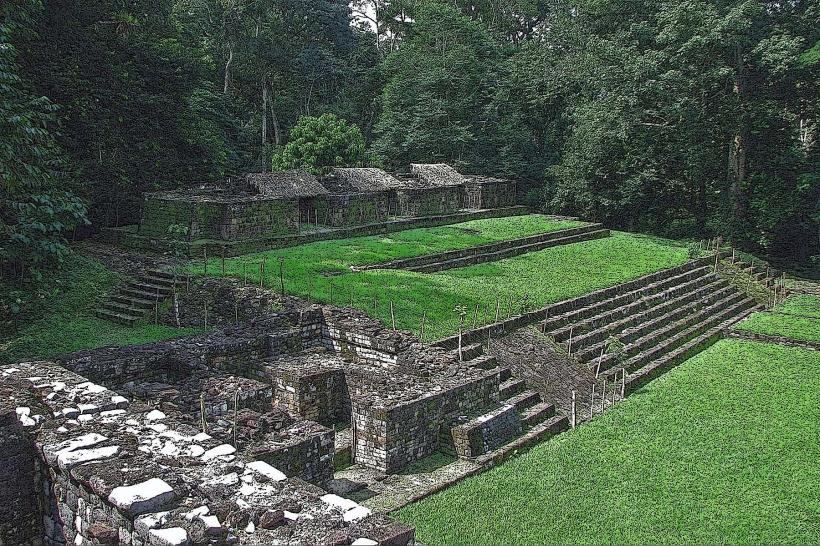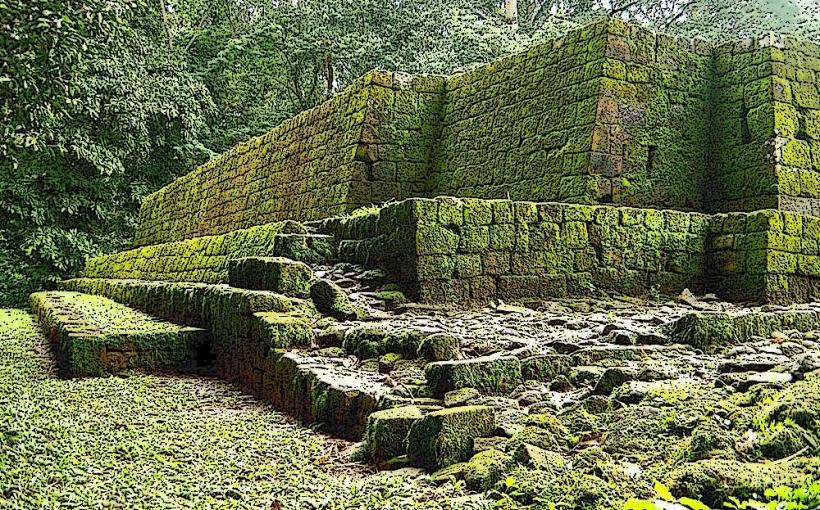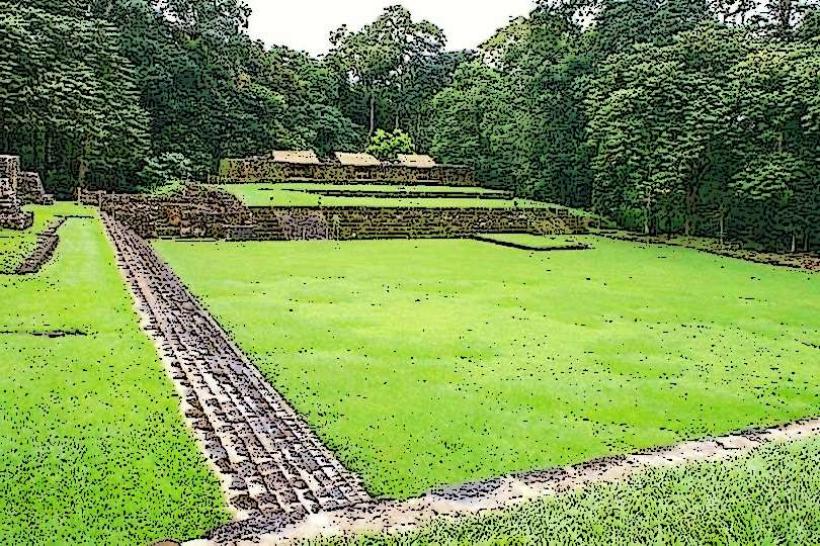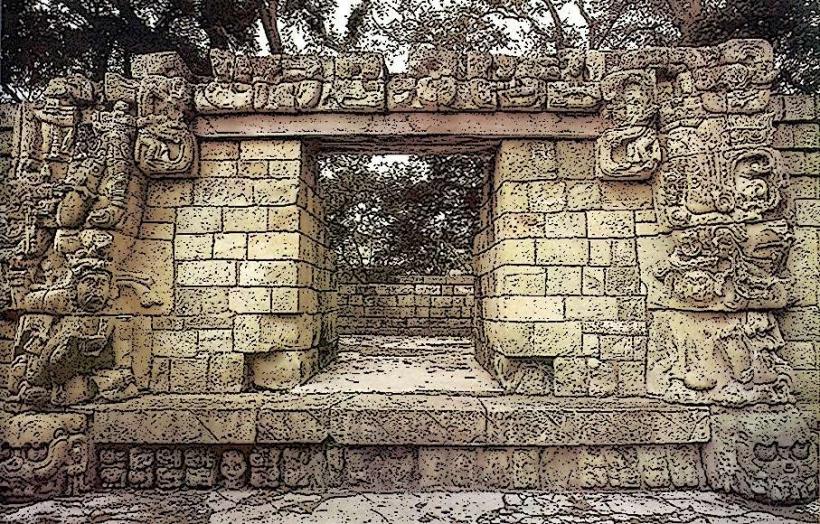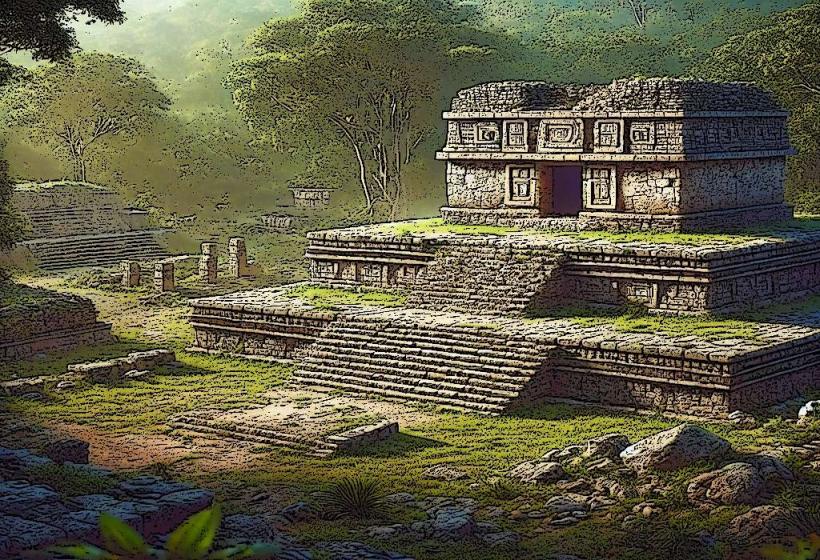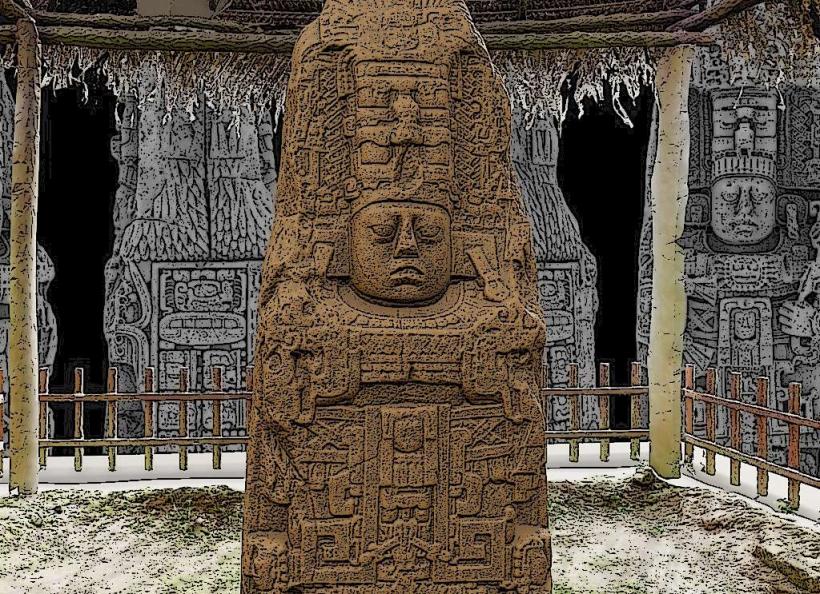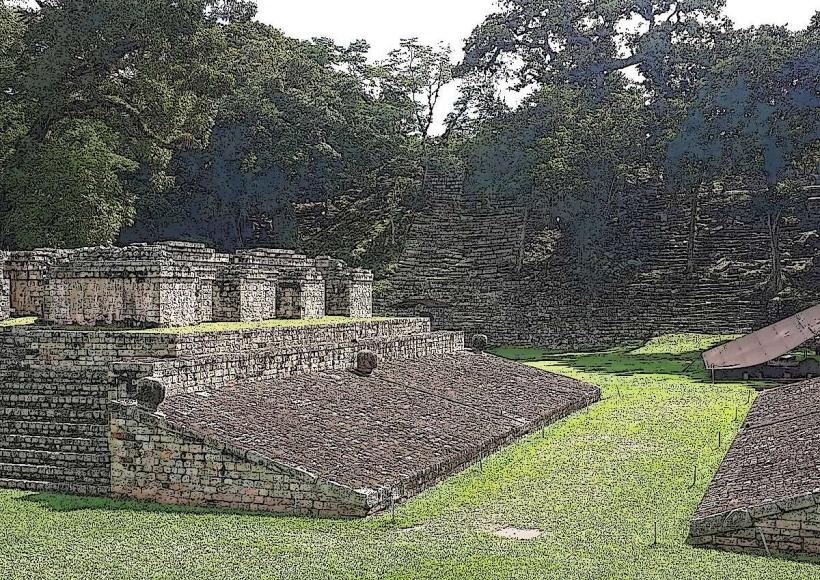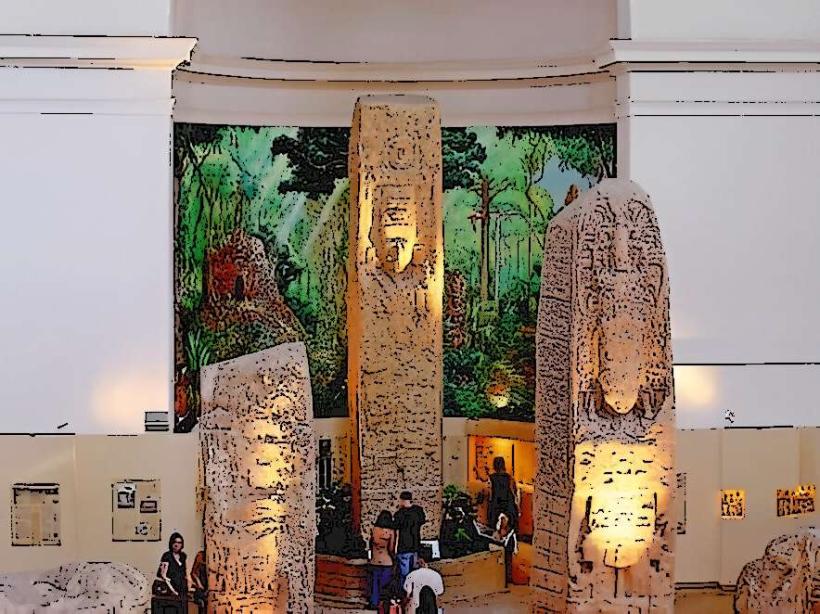Information
Landmark: Stelae and ZoomorphsCity: Quirigua
Country: Guatemala
Continent: North America
At Quiriguá Archaeological Park, stelae and zoomorphs are among the most remarkable features, offering deep insights into the religious, political, and artistic traditions of the ancient Maya civilization.
Stelae
The stelae at Quiriguá are large stone pillars carved with intricate reliefs and inscriptions. These monumental stone markers were used by the Maya to commemorate important events such as the reigns of rulers, military victories, religious ceremonies, and the passage of time according to the Maya calendar. The stelae at Quiriguá are particularly famous for their size, the fine detail of their carvings, and the length of their inscriptions.
Key characteristics of the stelae include:
- Size and Scale: Some of the stelae at Quiriguá are the largest found in the Maya world. Stela E, for example, stands at about 10.6 meters (35 feet) tall, making it the tallest carved stela known in the Maya region.
- Inscriptions: The stelae are inscribed with Maya glyphs, which provide a detailed historical record of the rulers of Quiriguá, important dynastic events, and interactions with other cities such as Copán. These inscriptions were often used to record the ascension of new rulers, victories, and religious events. The glyphs are part of the Maya script, one of the most sophisticated writing systems in the ancient world.
- Depictions of Rulers: The stelae often depict the rulers of Quiriguá in elaborate ceremonial attire, emphasizing their divine right to rule and their connection to the gods. Rulers are typically shown in full regalia, demonstrating their power and authority.
The stelae serve both as historical records and as symbols of political power, with their inscriptions designed to perpetuate the glory of the rulers and the city itself.
Zoomorphs
The zoomorphs at Quiriguá are large, carved stone sculptures of animals, often representing symbolic and mythological creatures. These sculptures reflect the Maya worldview, in which animals were associated with specific gods, directions, and elements of the natural world. The zoomorphs at Quiriguá are often large and stylized, sometimes blending elements of both animals and human features, creating hybrid forms.
Some notable features of the zoomorphs include:
- Animal Symbolism: The zoomorphs at Quiriguá are often carved in the shape of animals such as jaguars, serpents, and crocodiles. These animals had deep symbolic significance for the Maya:
- The jaguar symbolized power, strength, and the underworld. It was also associated with night and darkness, as well as the god of the underworld, Xibalba.
- The serpent, particularly the feathered serpent (such as Kukulkán), symbolized life, renewal, and the connection between the heavens and the earth.
- The crocodile was associated with water, fertility, and the underworld, playing a role in creation myths.
- Sacred and Ceremonial Role: The zoomorphs were likely used as ceremonial altars or platforms. These sculptures served as focal points for rituals and possibly represented the mythological and cosmological forces that the Maya believed governed the universe.
- Hybrid Forms: Some zoomorphs feature both animal and human characteristics, reinforcing the idea that the divine and natural worlds were interconnected in Maya belief systems. These hybrid forms may have represented deities, spirits, or other supernatural beings.
One of the most famous zoomorphs at Quiriguá is Zoomorph P, a massive stone sculpture that is interpreted as a jaguar. Its size and the level of detail in its carving make it one of the standout features of the site.
Importance of Stelae and Zoomorphs
Both the stelae and zoomorphs at Quiriguá reflect the complex Maya worldview, where art, religion, and politics were intricately woven together. The stelae recorded the dynastic history and achievements of the rulers, while the zoomorphs symbolized the deep connection between the human world and the natural, supernatural, and divine realms. Together, they highlight the Maya's skill in sculpture and their sophisticated understanding of both political and spiritual matters.
In summary, the stelae and zoomorphs at Quiriguá are integral parts of the site's significance. They serve as both artistic masterpieces and symbolic representations of the Maya's intricate belief systems, political structures, and historical milestones. These monuments continue to provide valuable insights into the ancient Maya civilization, making Quiriguá one of the most important archaeological sites in the region.

